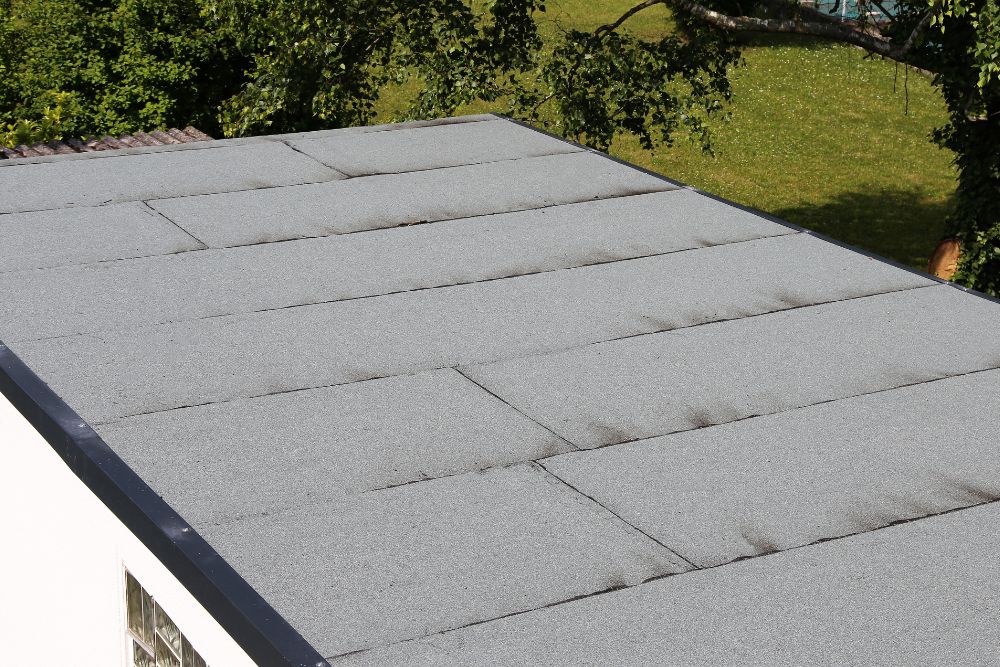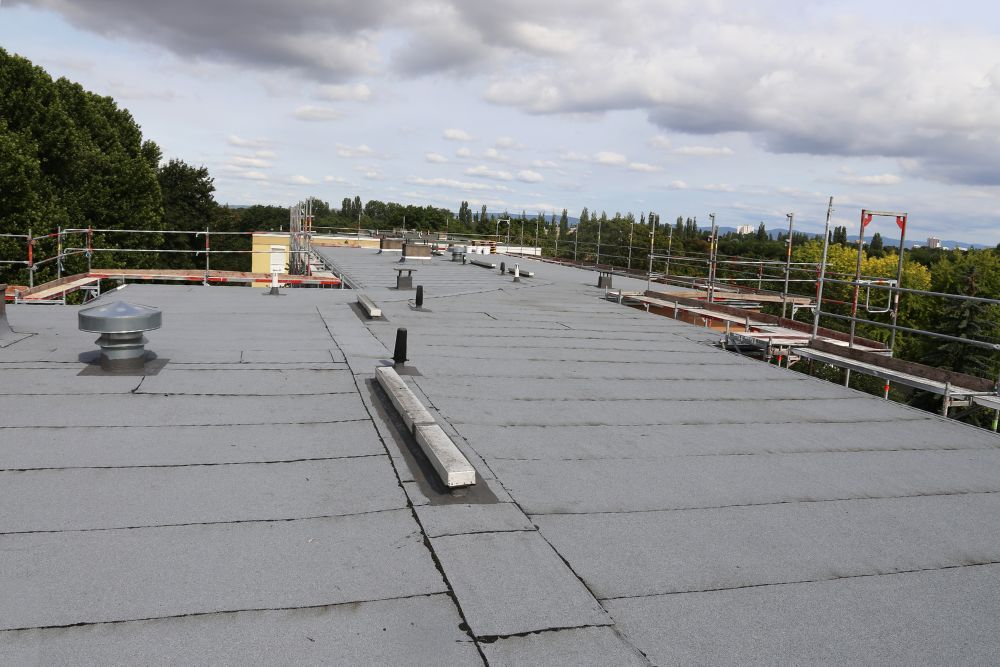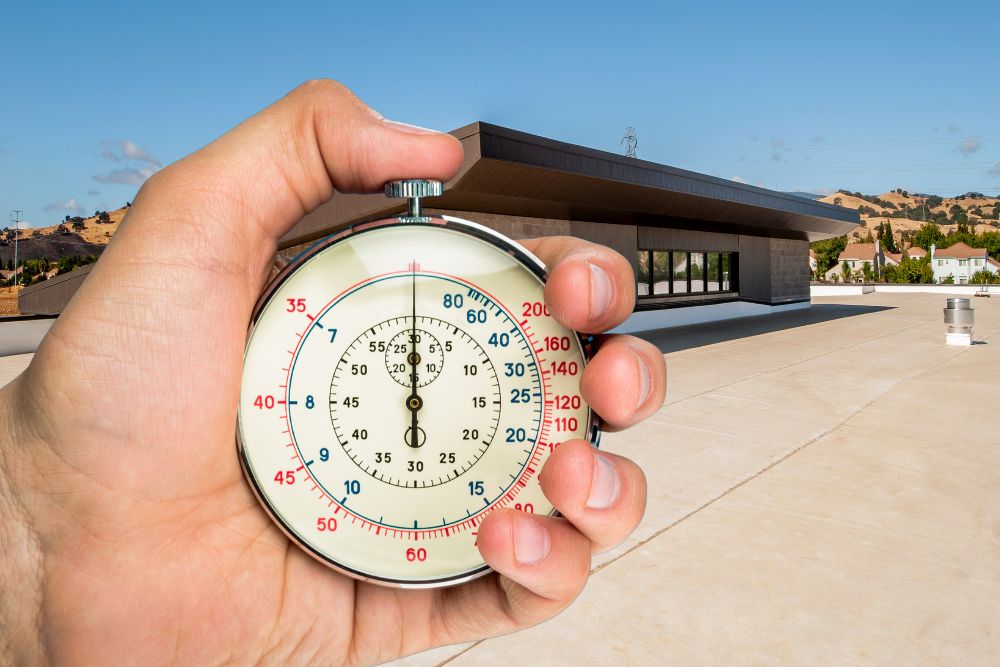When it comes to flat roofs, they are not always easy to overlook. To understand what a flat roof is, think about its design and function. Flat roofs involve details like drainage systems and weather conditions, making them more complex than you might think.
So, why take a closer look at these seemingly basic structures?
Types of Flat Roof Drainage Systems
Flat roof drainage systems have different options to efficiently manage water, including inner drains, scuppers, gutters, siphonic drainage systems, and tapered insulation. Inner drains are placed inside the roof structure to collect and redirect water towards the building’s drainage system. Scuppers are openings at the roof’s edge that help water flow away from the building to prevent pooling. Gutters are essential for directing water to downspouts for proper disposal.
Siphonic drainage systems use a vacuum effect to quickly drain large amounts of water from flat roofs, improving drainage efficiency. Tapered insulation is also important as it helps create slopes for water to flow towards drainage points, preventing water accumulation and potential damage. Each component plays a key role in maintaining an effective flat roof drainage system.
Best Climate for Flat Roofs
If you’re thinking about the ideal climate for flat roofs, it’s important to consider factors like temperature, precipitation, and sunlight exposure.
These elements can impact the construction and upkeep of flat roofs in various environments.
Ideal Flat Roof Climates
Flat roofs work best in dry climates with very little rain, which is why they’re popular in places like the Middle East. In these ideal areas, materials like masonry or concrete are often used for flat roof construction because of the warm, rain-free weather.
EPDM rubber membranes are also becoming more common in different climates for their affordability. Dry conditions in regions such as Egypt, Persia, and Arabia have traditionally favored flat roofs, showing their suitability for arid areas.
In certain climates, water that collects on flat roofs can be used for rainwater storage or for aesthetic purposes, making flat roofs practical in these regions.
Weather Considerations for Flat Roofs
Flat roofs are common in dry regions like Egypt, Persia, and Arabia due to their efficiency. Materials like masonry or concrete are popular for these roofs in warm, rain-free areas. EPDM rubber membranes are also used for their affordability in different climates.
To prevent water pooling on flat roofs in rainy regions, it can be managed for rainwater storage or aesthetic purposes. The climate plays a significant role in choosing the right materials and design for flat roofs to ensure durability and functionality.
Different Types of Flat Roofs
When looking at different types of flat roofs, you need to consider the various materials and construction methods available. Flat roofs need good waterproofing to prevent leaks and damage to the structure. Built-Up Roofing (BUR) uses multiple layers of felt and asphalt for waterproofing. Concrete roofs are strong and are often seen in commercial roofing and industrial buildings.
Ethylene Propylene Diene Monomer (EPDM) roofs offer great weather resistance and flexibility, making them a reliable option. Glass Reinforced Polyester (GRP) roofs provide a light and durable roofing solution for various uses. Green roofs have vegetation, which brings environmental benefits and boosts energy efficiency.
Each type of flat roof has its own advantages, so it’s important to pick the one that suits your needs and budget best.
Reasons for Using Flat Roofs
Flat roofs are a popular choice for many buildings due to their numerous benefits. They provide extra space for activities or equipment and are perfect for solar panels.
They are cost-effective, look modern and sleek, and are easy to maintain. Flat roofs also support energy efficiency and enhance the overall appearance of a building.
Cons of Flat Roofs
Flat roofs have some downsides that should be carefully considered. One main issue is water ponding since flat roofs don’t drain well, which can lead to water pooling and potential leaks. Without a slope, water leaks can worsen and even cause structural damage if not fixed promptly.
Flat roofs also tend to have a shorter lifespan than sloped roofs because they’re more exposed to the elements, requiring more frequent repairs and replacements. Drain blockages are common on flat roofs, which can cause water to stagnate and potentially lead to structural issues if not cleared regularly.
Poor insulation on flat roofs can result in energy inefficiency, leading to higher heating and cooling costs for the building. These factors increase the maintenance needs and overall costs of flat roofs, making them a less appealing option for some property owners.
Cost and Lifespan of Flat Roofs
Flat roofs can cost between $3 to $10 per square foot to install. They usually last around 10 to 20 years, but regular maintenance is important to make them last longer.
The type of materials used, how well they’re installed, and how they’re taken care of all affect how cost-effective and durable flat roofs are.
Cost of Flat Roofs
Installing a flat roof usually costs between $5 to $10 per square foot. The type of material used can affect both the initial cost and how long the roof will last. To figure out the total cost, consider these points:
- Different materials, like EPDM or PVC, can impact the price and durability of the flat roof.
- Regular check-ups and upkeep are essential to make the roof last longer and prevent costly fixes.
- Make sure to budget for insulation and a good drainage system to avoid extra expenses.
- While better materials might cost more at first, they can make the flat roof last longer and be more sturdy.
Lifespan of Flat Roofs
Understanding the factors that affect how long flat roofs last is important to grasp their longevity. Flat roofs typically last between 10 to 30 years, but proper maintenance is key to extending this time frame.
Elements like weather conditions, installation quality, and the type of materials used all influence the lifespan of a flat roof. Choosing cost-effective materials such as rubber membranes can help increase the lifespan of flat roofs.
Regular inspections and timely repairs are essential to maximize the longevity of your flat roof. Knowing the expected lifespan of your specific flat roof material will also help you plan and budget for future replacements or maintenance needs.
Conclusion
Flat roofs are a common choice for modern buildings because they look sleek and offer practical benefits. You can customize them with different materials and drainage systems to fit your climate and requirements. They’re easy to maintain and provide extra rooftop space.
However, it’s essential to think about the cost and how long they’ll last before choosing a flat roof for your building.



